Noisy images are a persistent problem for any photographer, editor, or creative. Photos and other images with grainy, speckled appearances detract from your work. They can transform an otherwise promising piece into total garbage.
You don't have to settle for images that drag your entire aesthetic down. These steps will teach you how to denoise an image using a variety of tools and techniques.
What Is Image Noise?
We've covered how raster images work in other blogs, but here's a quick recap. Raster image files store images as dots known as pixels. Each pixel represents a single color as a combination of three or more values, usually red, blue, and green.
Noise is what happens when bad data gets caught up in the mix. You’ll likely encounter one of the two main types:
- Luminance noise: These small spots seem out of place (too bright or too dark) compared to their surroundings. It looks like the "grain" often present on old analog film.
- Chrominance (color) noise: These random colored spots are associated with camera image sensor heating. They’re usually prevalent in darker areas, such as shadows.
Many conditions can cause images to become noisy:
- Scanning an image from a grainy photo might pick up dust, dirt, or speckles from the film or scanner bed.
- Taking a photograph in low lighting or with improper exposure can produce missing data. If the camera image sensor has to fill in the blanks, it might get things wrong.
- Taking photos in hot environments can cause the image sensor to make mistakes. Hot pixels caused by high temperatures and high ISO values (sensitivities above 400) are also common with long exposures.
- You might have one or more bad pixels in your image sensor, in which case, you'll probably need a new camera or a repair. These dead pixels differ from hot pixels because they show up in the same spots every time. Sometimes using the image sensor's self-cleaning function can help.
- Upscaling images might contribute to a blurry appearance, and if there's existing noise, it could get worse.
- Certain effects in apps like Photoshop add noise to photos by design for a classic vintage style.
- Changing how your image is stored is another culprit. You might run into this if you import screenshots from videos, adjust a JPEG’s compression, or re-save existing files with different extensions.
How Does Image Denoising Work?
Image denoising is also known as noise reduction. It typically involves applying a mathematical filter or AI function to separate the image from the noise.
This works because noise usually exhibits unique characteristics. For instance, if you looked at the image data from a photo as a signal, static would occur more often than other elements — it appears repeatedly. Smoother areas of color appear less frequently and in less repetitive patterns.
These characteristics make it possible to filter out high-frequency noise similar to how you'd filter out different parts of an audio signal. This type of noise removal is commonly categorized as nonlinear or spectral noise removal, but there are many types of algorithms out in the wild.
Problems With Mathematical Methods
Mathematical noise filtering is common, but it's not perfect. A few problems include:
- Mathematical functions aren't context-aware. They're too "dumb" to tell when they're also removing non-noise details, so they can result in a loss of data you'd prefer to keep.
- Math-based methods take a lot of computer power or a lot of time — choose your poison. Not only do these strategies keep you from doing other things while they're running, but they might not be possible on low-end hardware.
- Noise filters that use mathematical methods are specific to certain types of noise. For instance, they might not help with dead or stuck pixels even if they reduce film grain.
The AI Alternative
There's another way to use math to solve photo noise, but you might not expect it: AI.
AI noise removal works through a process called machine learning. Long story short, you set up a training session and show your algorithm thousands or millions of image pairs.
Each image pair contains a noisy or imperfect image and a clean version. The algorithm "learns" to recognize the difference between the two. After seeing thousands of pairs, it’ll eventually devise an effective method to remove noise from other images.
AI denoising is nice because you get to pay upfront. All the computation time and effort goes toward the training. But afterward, you can apply the same training to new images quickly and with way less work. This means online AI noise removal tools can achieve things in your browser that your computer never could.
How Do I Denoise a JPEG Image?
JPEG images are popular because they store lots of data at relatively high quality. Their built-in compression also keeps these files from getting too big.
Unfortunately, JPEGs are just as susceptible to noise as any other photos. The same compression features that trim down their size can result in imperfections and artifacts. The more you change or re-save these images, the worse the problem gets.
The easiest way to denoise JPEGs is to use an AI Image upscaler. For this, we can use the Overscale function.
To start, visit the URL above. You'll notice an area where you can drag and drop an image file. Or click the button to select your image for uploading using a system dialog.
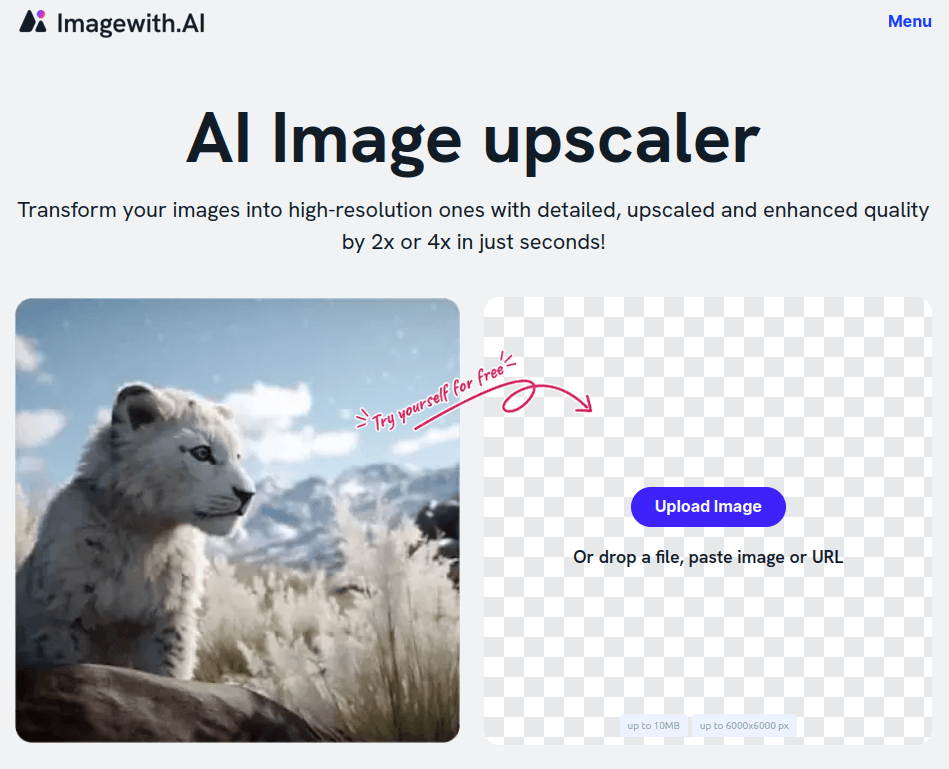
Once you've imported your image into the tool, you'll have a few options.
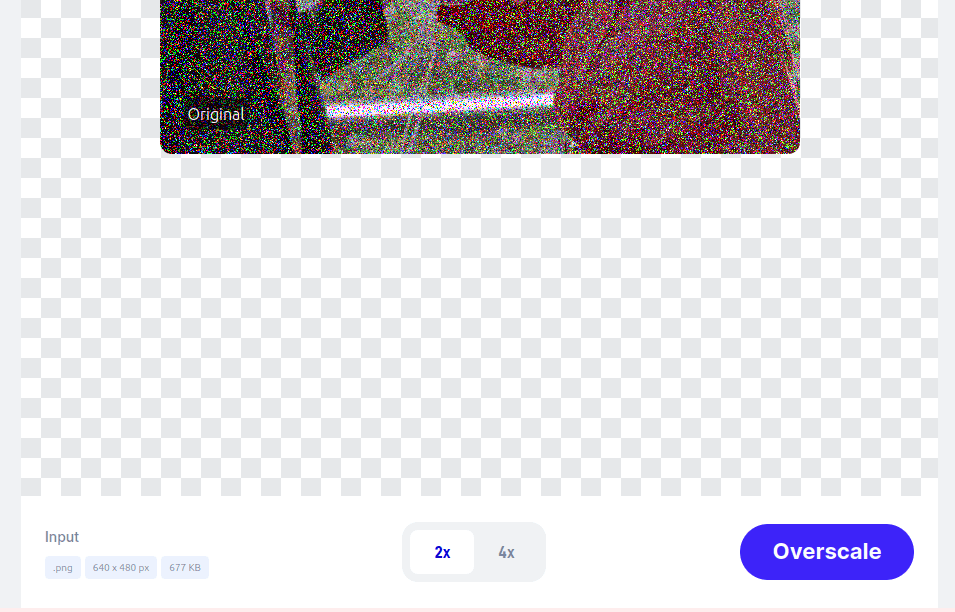
At the bottom, you'll see a spot to select your overscaling factor. This is the amount your image will be blown up by, so choose whatever's appropriate for your use case.
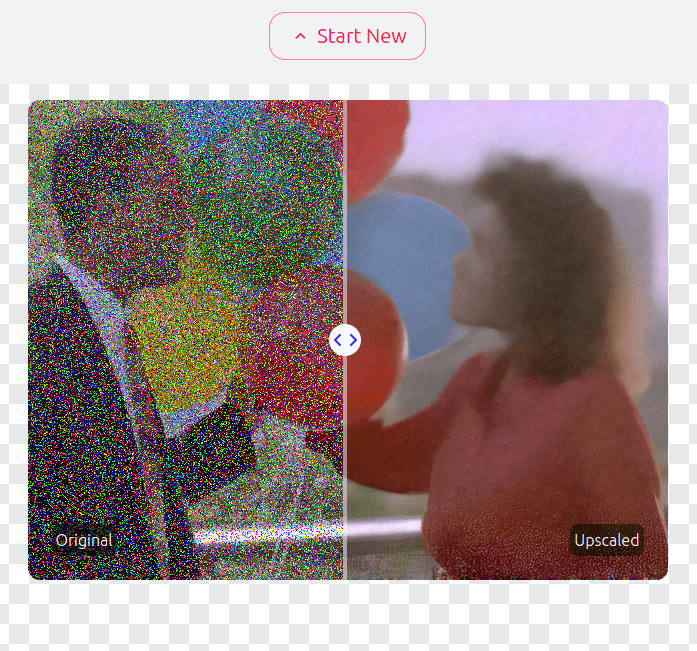
Move the slider to the right or left to see how the results will look compared to your original. This is a good way to determine whether you might benefit from additional image processing.
Once you've selected your preferred settings, you can save the results as a new image. It might be wise to use a different file name than you started with for the sake of keeping things organized.
How Do I Denoise an Image in Photoshop?
There are a few ways to reduce noise in Adobe Photoshop. These techniques only apply to the most recent version.
Use the JPEG Artifacts Removal Neural Filter
Photoshop includes a variety of AI Neural filters that leverage machine learning. The JPEG Artifacts Removal feature is only for JPEG files that include compression artifacts, but it does a good job despite its niche use case.
These filters are super simplistic when it comes to control. You just choose Filter > Neural Filters, pick an option from Low to High, and wait for the results. This may take a while depending on the size and quality of your image.
Use the Reduce Noise Filter
After opening an image, duplicate the background layer via the menu or the layers panel. Next, convert the new layer to a smart object. Using a separate layer for denoising will let you filter and then adjust the settings later if you're not happy.
Make sure your new layer is selected, and then navigate to Filter > Noise > Reduce Noise.
Use the sliders to get the results you want, keeping the following in mind:
- If things are going slow, you can turn off the preview mode by clicking the checkbox. This may be helpful with larger files or when you plan on a lot of tweaking.
- If you can't see a difference, zoom in on the preview.
- When editing a JPEG, you can also click on the Remove JPEG Artifact option to help clean things up.
- Choose the advanced option to target luminance noise in a specific channel. This is helpful if you only have one color of noise, like red or blue.
When you've finished, click OK at the top.
Use the Adobe Camera Raw Filter
Photoshop also supports opening raw image files from your camera. These files are minimally processed, and they contain unmodified data straight from your image sensor.
Adobe Camera Raw will appear by default in a new window when you open a raw file, and it has all the same features you'd find in Adobe Lightroom. We've already covered how to use Lightroom to remove noise, so please check that article out here.
How Do I Denoise a Photo on My iPhone?
Mobile devices like the iPhone are getting much faster these days. They still can't compete with dedicated computers for raw power and speed, but they're leaps and bounds ahead of previous generations.
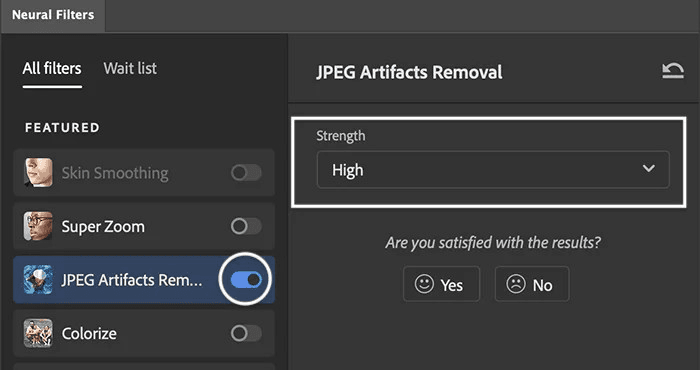
Although there are a number of apps that can tackle denoising — including mobile versions of Lightroom — you don't even have to go that far! The native iOS Photos app ships with a Noise Reduction function that you can use to adjust raw photos.
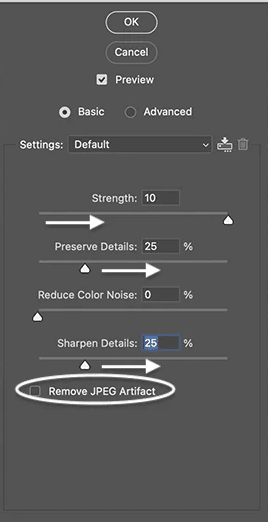
After opening a photo, tap on Edit. Choose Noise Reduction, and then pick how much you want with the slider. Just remember that at high levels, you might lose a lot of the finer details.
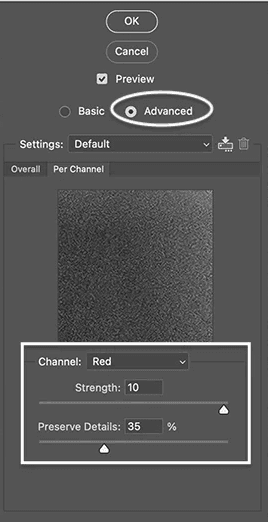
Conclusion
Noise removal helps photos and original artwork shine. It's particularly helpful when you plan on resizing your files — even minimal noise can become a huge problem at scale or when you decide to print.
While there are a ton of plugins and native apps designed to help you manage noise, you should never discount AI. Being able to denoise and overscale images in your browser brings the best of the cloud straight to your device without interrupting your workflows.Try it out today by visiting Imagewith.ai.






